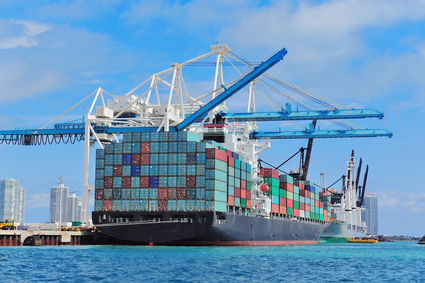Marine Port Downtime: Ports Struggling with Unscheduled Downtime
 Marine Ports Struggling with Unscheduled Downtime
Marine Ports Struggling with Unscheduled Downtime
An idle port is a port that is not making any money. However, despite indications that overall shipping is on an uptick, average downtime rates have gone up in the past year. In a recent survey, 90% of the involved ports reported experiencing some level of downtime. This downtime, when terminals sat idle, resulted in loses that totaled over £100,000 per year, per port. That amount of lost revenue is hard to make up and it can have a huge impact on a port operation’s bottom line.
The cause of this marine port downtime might have less to do with any actual decrease in traffic and more to do with accommodations. Many ports simply cannot handle an increase in container traffic. When the basic infrastructure needs of shipping vessels are lacking, there can be congestion and delays. Those incidents have a ripple effect that can add to a port’s operating costs and may lead to that persistent downtime.
Many ports are taking a proactive stance by developing nearby hubs to handle the increased traffic flow. However, these infrastructure improvements aren’t happening across the board. Too many marine ports are happy to keep the status quo. Unfortunately, they aren’t looking towards the future, especially what an investment in expansion could mean for their business. Ironically, these are the same ports that are reporting downtime losses.
A positive example of how a port can avoid downtime issues can be found at the UK Port of Felixstowe. Recently, Felixstowe has shelled out around £300m to reconfigure their existing fender systems. That is just one of the measures that Felixstow has undertaken in order to remain competitive. They’ve made these infrastructure investments based on industry projections that suggest they could double their capacity within ten years. With optimistic projections like that, the port managers had incentive to spring into action. They’re not going to let any business float by.
The ports that are not taking a proactive approach towards minimizing downtime lose more than just revenue. There could be issues with lack of credit, requiring the need for financial restructuring. When these marine port operations continue to post losses, they are put in a vulnerable position for a take-over. Additionally, relationships between shipping companies and these ports can be forever harmed. Why would a shipping line return to a port that can’t handle their business?
The more struggles that a port has, the greater the risk that shipping companies will look for alternative solutions. Could this be one of the contributing factors as to why many American manufacturers are bringing their operations back to the US?
All of this follows the sage business saying that goes, “If you want to make money, you have to spend money.” That holds especially true for the marine port industry.

